Speak To Our Zambia Specialist Today
and start planning your tailor-made holiday

Alistair
Travel Expert
Discover the seasonal water levels at Victoria Falls
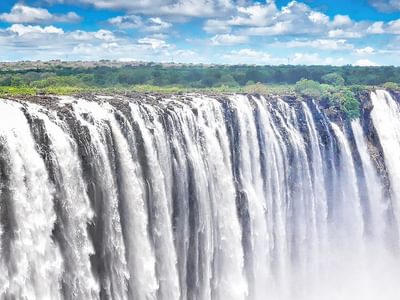
Wondering what the water levels will be for your Victoria Falls holiday? Read on to work out when you should visit.
When you live as we do, at Chundukwa River Lodge on the Zambezi River, just 35km above Victoria Falls, much of life revolves around the river, the Falls, and their variations of ‘high water and low water’. As with most of Africa, seasons at Victoria Falls are categorised by characteristics, the most common definitives being the high and low water levels, and wet and dry seasons.
I’m sure most local residents are in tune with these changing climatic periods for various reasons – planting, harvesting and storing crops, irrigation, hydro-electric power supplies, fishing, roof maintenance, and in some cases moving homes and livestock to higher grounds – as the Lozi people in Barotseland do, before the annual floods. For us at Chundukwa, we observe these changes in the varying bird-and-wildlife seen at the water’s edge, the changing channels on the river, the water level under our stilted river chalets, and the types of adventures that our guests can enjoy. Then of course there are the Falls – The Smoke that Thunders, more at certain times than others! And the Batoka Gorge that the Zambezi plummets into, below Victoria Falls. Both of these are hugely affected by the amount of water flowing over the Falls.
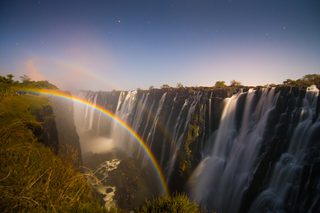
Historically, the rainy season in this greater region and in much of the Zambezi’s catchment area is from November to March/early April, and the dry season from April/May until November. However these periods of wet and dry do not fall exactly in line with ‘high and low’ river levels.
Characteristics: very full Falls with a large cloud above them; a guaranteed soaking when viewing the Falls; a fast flowing wide river to look out on; a great time for canoeing, flights over the Falls, and experiencing the abundance of the Zambezi; plus glimpse a lunar rainbow if the timing’s right (during a full moon in good weather).
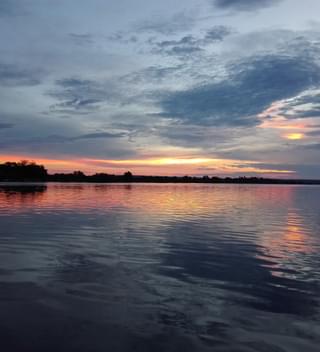
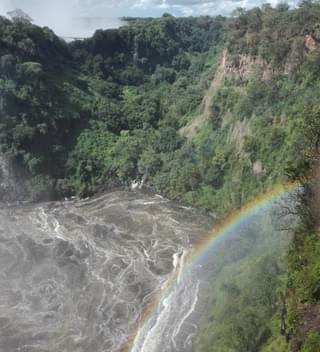
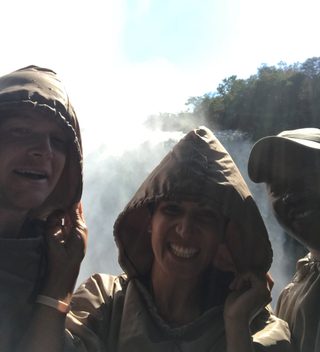
The Zambezi is noticeably starting to drop as we enter into ‘low water’ season.
Characteristics: drier Falls, allowing for access to the breath-taking spots under and on top of the Falls; interesting channels and sandbanks in the upper river – fantastic for bird and wildlife spotting; and the best time season for white-water rafting.

This is when the river and Falls start filling up, between the end of ‘low water’ and beginning of the ‘high water’ season
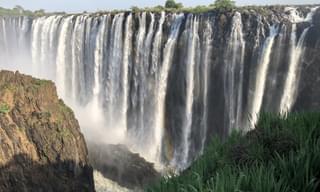
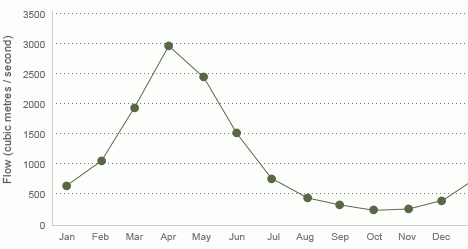
Characteristics: Summer time, with warm temperatures, moody skies and beautiful sunsets, a lush green landscape, showers and thunderstorms. A beautiful time to be in the area.
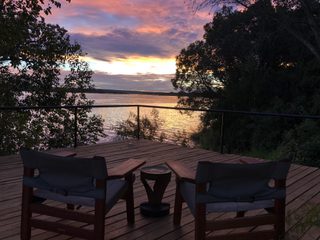
Characteristics: Winter through to Summer. Clear skies, no rain, an increasingly dryer landscape – a great time for safaris. Cool temperatures and misty mornings at the onset of the dry season, with the earth warming up from the middle of August, and increasingly warm until the rains arrive towards the end of November. Smoky sunsets from the dust in the air.
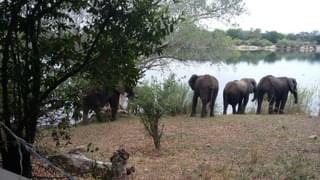
Here at Chundukwa above the Falls, rocks are jutting out of the river and the river flow is moderate. The lower water levels make navigation on the upper river slightly more tricky, but they also allow for beautiful sandy beaches to emerge – perfect for crocodiles to sun themselves on – as well as some rocky outcrops that make for top coffee-on-the-rocks spots with our guests!
Rock pratincols, African skimmers, knob-billed ducks to name a few also take up residence on the small emerging islands making it a birdwatcher’s paradise. Hippos move into the shallows and their honking serenades can be heard up and down the river. At the same time, we’re well into the dry season, so there’s an abundance of wildlife along the water’s edge and coming down to the river to drink.
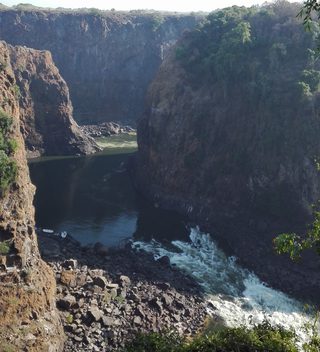
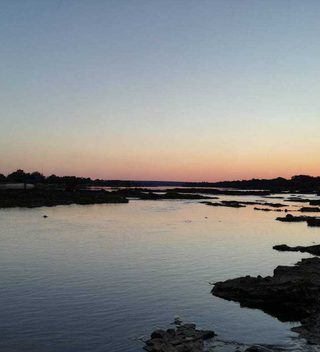
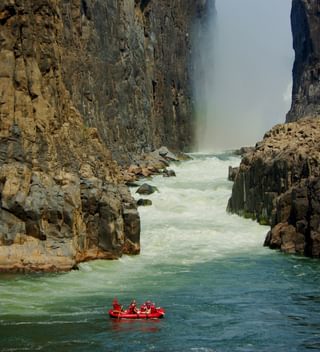
Whilst the Falls still have an impressive flow, patches of wall behind the falls are now visible. You’ll still get a bit wet from the spray of the Falls – but definitely not a soaking! Towards the end of the low water period, there’ll only be a couple of channels where the river rushes over the falls, with much of the rock wall visible, and it will likely stay this way until mid-December, when the river gradually starts to rise again.
The low water season also overlaps with part of the dry season and safari season. The feeling of a scorched land that we experience in October and early November, is starkly contrasted with the exquisite cool blue waters of the Zambezi River. And whilst a minimal amount of water is flowing over the Falls, the river and the region remains enticing to adventurers and anyone who is wanting to feel and experience Africa’s aliveness at this time of the year.
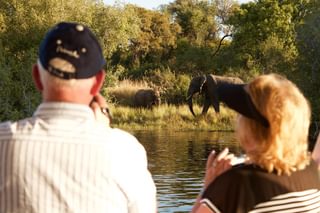
In our area on the Upper Zambezi and extending downriver to Victoria Falls, the water levels are influenced by rainfall in the region of the tributaries and the areas it passes through before reaching here. So whilst ‘the rains’ can start as early as November, here we only notice the effects of the river levels rising towards the end of December, early January.
By December we’ve usually have had our first rains, and whilst the river level is still low, the surrounds start turning green and looking fresher. By January you might see foam floating down the river as its tributaries start flowing again, and the clouds of spray once more hover above the falls.
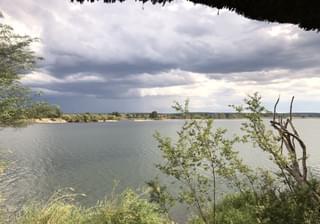
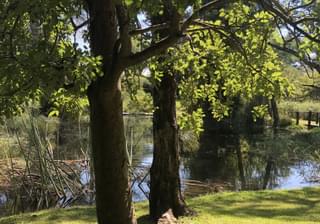
Usually by February the Falls are sufficiently full again to guarantee a soaking from their spray. There’s a general feeling of abundance as the surrounding landscape is a bright green, the river fills up, and the night skies drip with stars as the air is clear after the rains. Whilst the animals have plenty of water so are no longer drawn to the river, the colour-intense sunsets and cooler temperatures offset by the occasional afternoon thunderstorm make this a very comfortable time to visit the region.
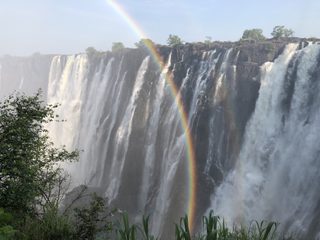
The Zambezi continues to fill up as the rains continue, so that usually by the end of March the Falls can be seen in all their fullness, and on the rise until the end of April/early May. During this time there can be so much water falling over Victoria Falls that you really experience the Falls rather than view them – as the amount of spray and rain from the Falls drenches you and in certain viewing areas doesn’t allow you to see too far ahead! But this is a magical time of year too, as the skies start clearing up, temperatures are favourable, the surrounds are lush, and the river rushes past you – carrying lots of debris and even reed islands with it. Our stilted chalets are well over the river at this time of year.
By April, the rain here generally clears up, and after the river’s peak in early May, the Zambezi gradually starts dropping. The Falls are still abundant in June and early July whilst the river subsides, and by August certain channels and patches of flow start drying up, with much of the bare rock face of the Falls visible from September until the end of November, before the cycle starts again.
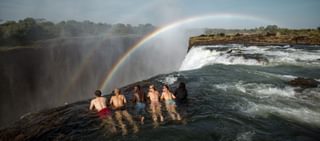
While this general pattern is observed annually, there are fluctuations year on year, all depending on how early or late the rains arrive, how long they continue, and how much rain there is. This year, for example, the water levels in this region rose quite quickly, and to a higher level than the last few years, and as a result are taking longer to subside to what we’d call ‘low water’. This will in turn have an effect on the patterns and levels for the remainder of this year and next – as it will be unlikely that levels are able to drop to as low as last year, before the river is on the rise again, presuming there is enough rain.
Wondering when to visit? Take a look at our best time to visit Zambia guide.
Looking for some more inspiration? Check out our best safari holidays ideas, our favourite family safaris, our big five safari guide or our top African safari honeymoon suggestions.
and start planning your tailor-made holiday

Travel Expert